TechRadar Verdict
A OnePlus 11 with a better display, bigger battery, simpler camera and lower starting price. If you priorize battery life and value over camera versatility, at this stage in 2024, this is a better OnePlus to buy over last year's flagship.
Pros
- +
Outstanding display
- +
Brand-leading battery life
- +
Rich feature set
Cons
- -
Update promise could be better
- -
Lackluster secondary cameras
- -
No wireless charging
Why you can trust TechRadar We spend hours testing every product or service we review, so you can be sure you’re buying the best. Find out more about how we test.
OnePlus 12R: Two-minute review
OnePlus is kicking off 2024 with a pair of new phones, its latest flagship OnePlus 12 and the intriguing OnePlus 12R; which marks the first time an R-series device has launched internationally and not just in India.
While we've seen T-series entries on the global stage before, the R more closely delivers on the promises of the company's full-fat flagship phones and this year's 12R is no exception; running on familiar hardware for those who knew last year's OnePlus 11, while also serving up some company and industry firsts all its own.
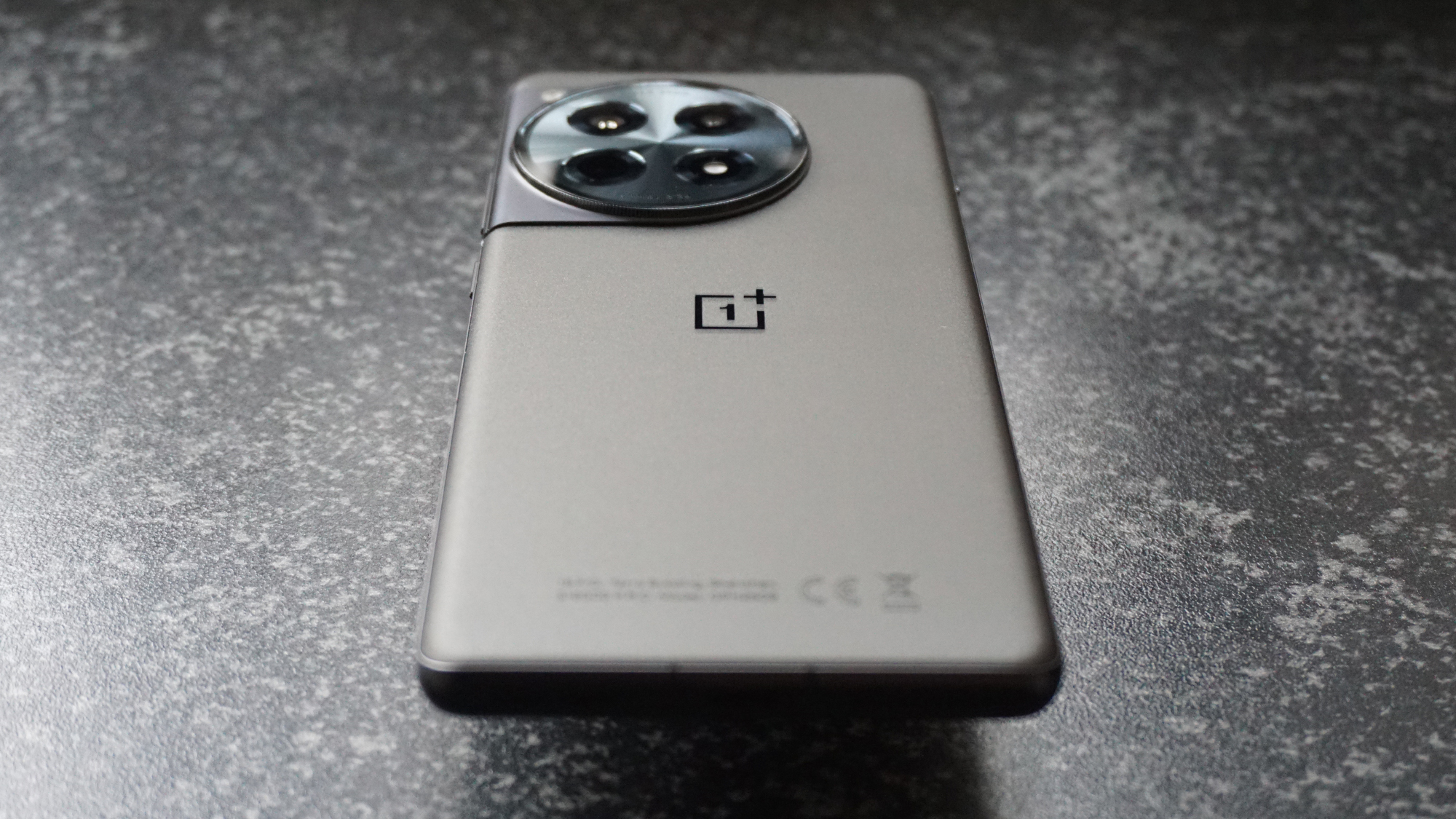
At a glance, you'd be forgiven for mistaking the 12R for both the OnePlus 11 and the OnePlus 12, as all three phones sport a familiar aesthetic, with rounded edges and the distinct 'Starlight Dial' circular camera surround that we were first introduced to on 2023's OnePlus flagship.
The iconic physical alert slider may have swapped sides (OnePlus says this improves antenna performance), and the phone may lack wireless charging and full IP68 dust and water resistance, but it's otherwise a beautifully crafted and premium-feeling phone with plenty of power and battery longevity to boot.
If it weren't for the lesser secondary cameras, the 12R amounts to a revamped OnePlus 11, with the same flagship-class Qualcomm Snapdragon 8 Gen 2 found in 2023's finest, up to 16GB of RAM, 256GB of storage, and the biggest battery ever seen in a OnePlus phone, which translates to the best longevity we've ever gotten from a OnePlus phone – battery life that matches the likes of the mighty Samsung Galaxy S23 Ultra.
OnePlus has also included its latest OxygenOS 14 user experience out of the box, which comes with a heap of branded technologies; most importantly the 'Trinity Engine': an umbrella term for a number of features that ensure the 12R's performance doesn't degrade over time, focusing on CPU, RAM, and ROM management.
A killer 1.5K LTPO 4.0 AMOLED display fronts the phone, with a more advanced adaptive refresh rate, touch response rate and peak brightness (4,500nits) than even the OnePlus 11.
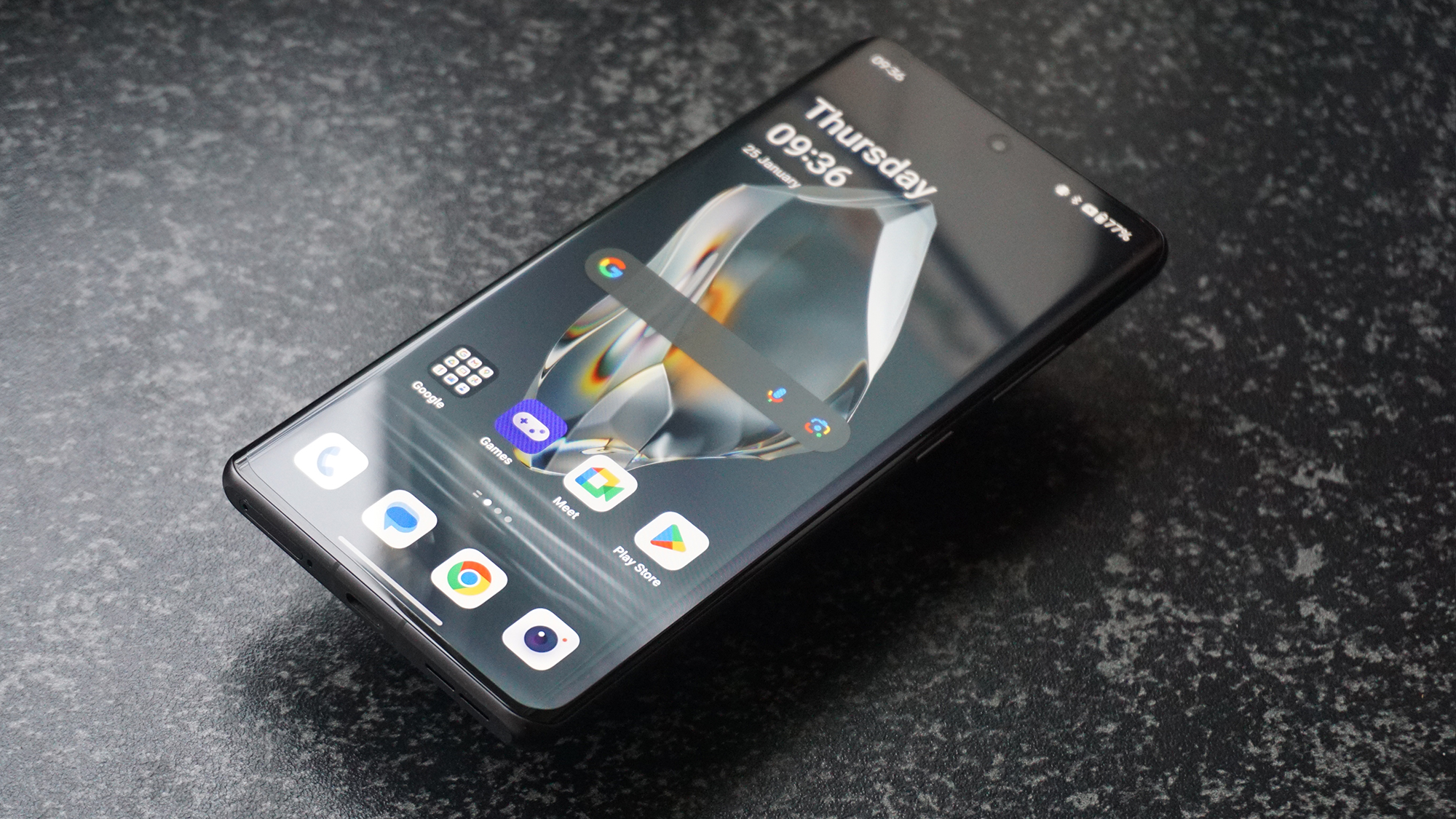
If there's one area where the 12R does fall short of its otherwise flagship standing, it's with camera versatility. The main 50MP Sony sensor delivers a similar experience to that of last year's flagship – running on the same sensor and with a fast shutter not to mention a year's worth of refinement from OnePlus. However the 8MP ultra-wide and 2MP macro cameras don't keep step with regards to quality and consistency.
For the price, there's little that matches the 12R directly, however, alternatives like the OnePlus 11, Samsung Galaxy S23 FE and iPhone 14 come close; provided you're willing to trade away the phone's excellent display tech and battery prowess. One of the best OnePlus phones yet? Quite possibly, even without being a fully-fledged flagship in its own right.
OnePlus 12R review: Price and availability
- Priced from $499.99 / £649
- Announced January 23, on sale February 13
- $300 / £200 lower starting price than equivalent storage OnePlus 12
The OnePlus 12R serves as the global variant of the OnePlus Ace 3, which launched in China at the very start of 2024. The 12R made its debut as part of the OnePlus 12's global launch event in India on January 23, with a staggered on-sale date that sees the phone released first in India (on February 6), before arriving in markets including the US, UK and Europe on February 13.
| Storage | US price | UK price | AU price |
|---|---|---|---|
| 128GB | $499.99 | N/A | TBC |
| 256GB | $599.99 | £649 | TBC |
US customers get the choice of two storage configurations, starting at $499.99 with 128GB of space, while UK and European customers only have access to the single higher-capacity 256GB model, which sells for $599.99 in the US and £649 / €699 in those two other markets, respectively.
Pricing means it undercuts other newcomers, like the Samsung Galaxy S24, Google Pixel 8 and baseline iPhone 15 by quite a margin, and in truth, there's little worth considering around the 12R's launch price, save for more expensive but older phones that have had time to drop in price, including the company's own OnePlus 11.
The company's 2024 flagship – the OnePlus 12 – comfortably sits around $300 / £200 more expensive for the same amount of storage, but for the extra cash you're getting a sharper screen, better cameras, longer-term software support, and Qualcomm's latest and greatest flagship silicon in the Snapdragon 8 Gen 3.
Note though that there's no current Australian availability for the OnePlus 12R or the standard OnePlus 12.
- Value score: 4 / 5
OnePlus 12R review: Specs
| Row 0 - Cell 1 | |
| Dimensions: | 163.3 x 75.3 x 8.8mm |
| Weight: | 207g |
| Display: | 6.78-inch (2780 x 1264) 19.8:9 1Hz to 120Hz LTPO 4.0 ProXDR AMOLED Display |
| Chipset: | Qualcomm Snapdragon 8 Gen 2 |
| RAM: | 8GB / 16GB (LPDDR5X) |
| Storage: | 128GB (UFS 3.1) / 256GB (UFS 4.0) |
| OS (at launch): | OxygenOS 14 running on Android 14 |
| Primary camera: | 50MP, f/1.8, Sony IMX890 w/ OIS |
| Ultra-wide camera: | 8MP, f/2.2, Sony IMX355, fixed focus w/ 112º FoV |
| Macro camera: | 2MP, fixed focus, 4cm effective shooting distance |
| Front camera: | 16MP, f/2.4, fixed focus |
| Battery: | 5,500mAh |
| Charging: | 80W wired (US) / 100W wired (RoW) |
| Colors: | Iron Gray, Cool Blue |
OnePlus 12R review: Design
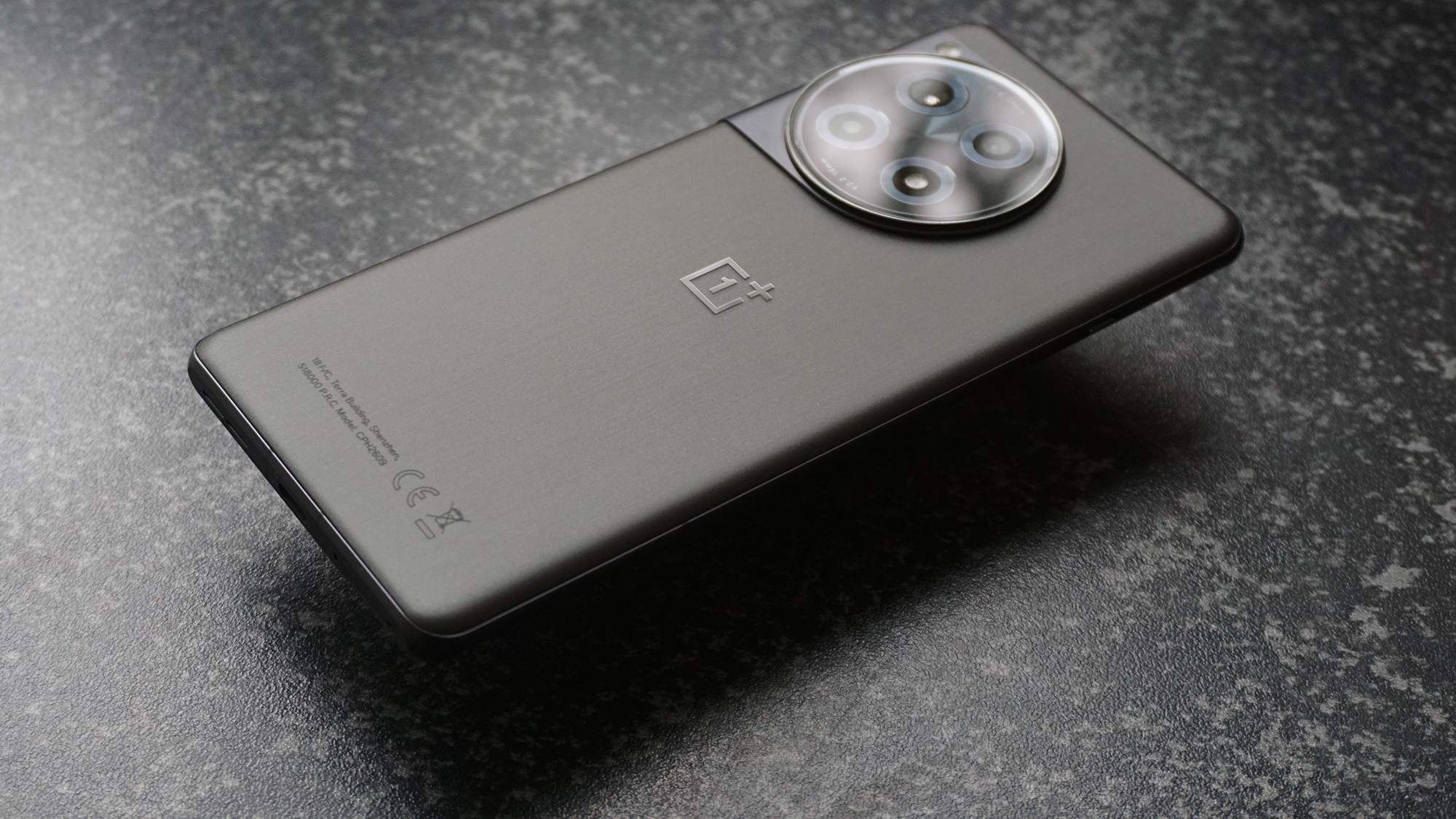
- Elegant, premium curved glass and metal aesthetics
- Physical alert slider on left side
- IP64-certified against dust and water
The OnePlus 12R presents itself as a premium handset, with a level of fit and finish on par with any of the latest top-tier phones out there, not least because it shares in the 'Starlight Dial' design language of this year's and last year's OnePlus flagships.
The Iron Gray model (pictured) has a matte glass back that's superb at repelling fingerprints (and other marks) but has an almost Teflon-like low friction coefficient, meaning it's a little slippery in the hand. The Cool Blue alternative, meanwhile, is the more head-turning option, that's better at catching the light (and fingerprints), if you're in the market for a little more flare. It's worth noting that colorway availability varies by region and storage variant too.
If you're not a fan of the straight-sided iPhones or Galaxy phones (or the rumored design of the forthcoming Pixel 9 series) leading the market, the 12R is the perfect remedy. The front and back glass curve elegantly into the thin metal frame, which makes it a touch trickier to hold by comparison but nicer in the hand and on the eye.
A trait that's slipped in since OnePlus more closely buddied up to sister company Oppo is the adoption of a flat top and bottom to some of its phones' frames, and that's the case with the 12R. A USB-C port, SIM tray and speaker grille reside along the bottom, while microphones and – perhaps most intriguingly of all – an IR blaster can be found on the phone's top edge. This is a novel addition that's seldom seen on phones nowadays, but gives the 12R universal remote functionality which you won't readily find on the competition; great for controlling your TV, aircon, projector, and even some smart lights, all from the one device.
OnePlus' iconic alert slider (oddly absent from previous performance flagships like the OnePlus 10T) is reassuringly present on the 12R, although perhaps not as 'correct' as long-time OnePlus users might expect, as across both entries in the series, this knurled three-stage switch is now found on the opposing side to where it usually sits (the right side). OnePlus claims this helps with antenna performance – especially when gaming in landscape – and in practice, the learning curve of adjusting to a swapped alert slider and volume rocker is negligible.
While the 12R is notably thinner (and a touch lighter) than the standard OnePlus 12, that's partly down to the lack of wireless charging, while that finely-crafted bodywork also falls short of the industry-standard dust and water resistance, with only IP64 certification (most flagships boast IP68 protection against water ingress).
- Design score: 3.5 / 5
OnePlus 12R review: Display
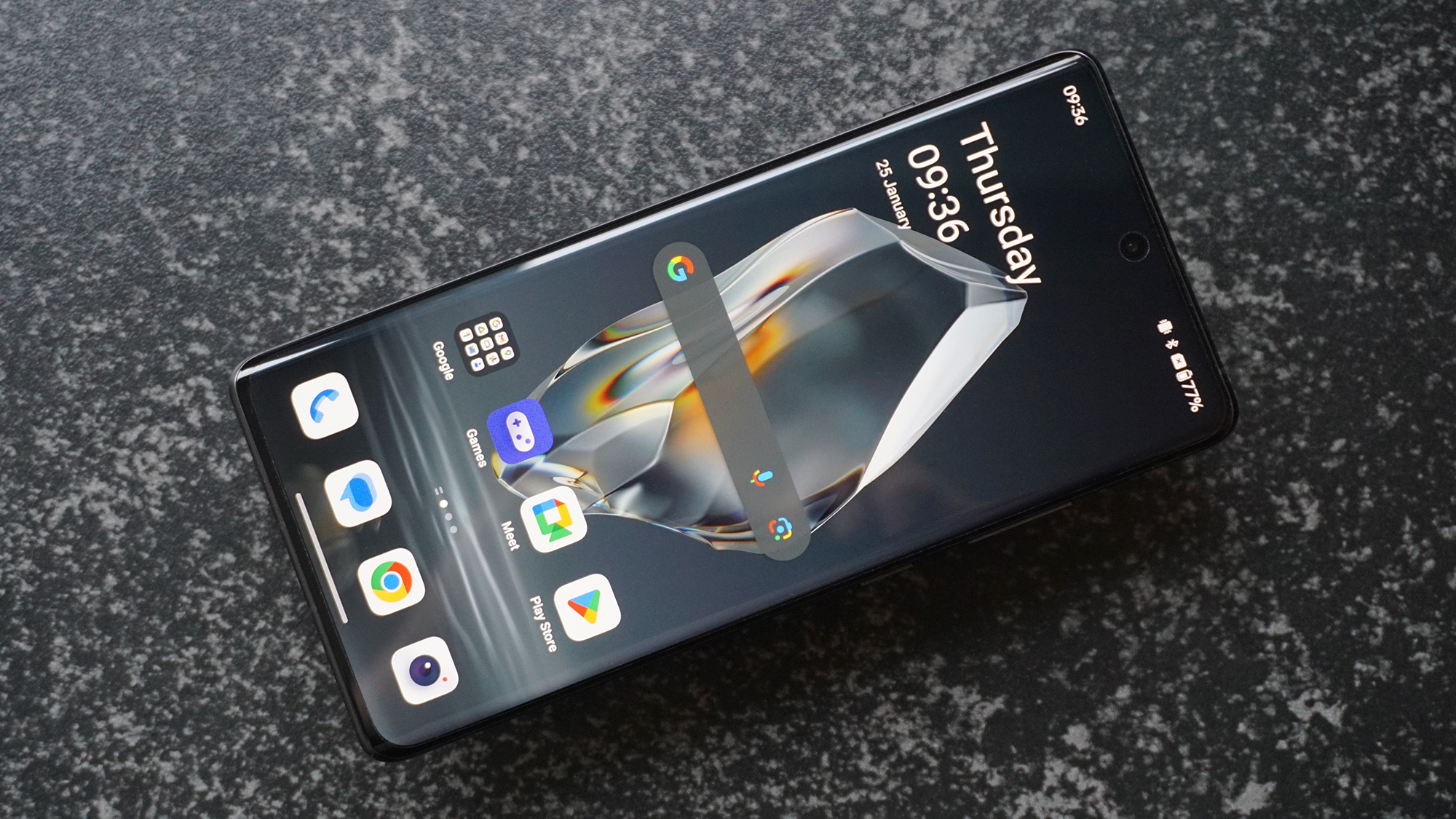
- 6.78-inch 1.5K 19.8:9 120Hz LTPO 4.0 ProXDR AMOLED display
- Outstanding peak brightness up to 4,500nits
- Aqua Touch for accurate use in the wet
Look past the marketing spiel (which there's a lot of) and the 12R's display is spec'd as one of the market's best right now. Beyond the fundamentals as a 6.78-inch 1.5K AMOLED panel protected by Gorilla Glass Victus 2, the ProXDR screen on the 12R boasts the same peak brightness as the OnePlus 12, at a whopping 4,500nits (with an HBM or high brightness mode peak of 1,600nits).
For comparison, the iPhone 15 series tops out at 2,000nits, while the S24 series reaches 2,600nits. Although that peak isn't an increment you'll likely hit in day to day use, the additional headroom over screens of the most prominent players in the industry means everything from outdoor legibility to HDR content consumption (it's also Dolby Vision, HDR Vivid and HDR10+ compliant for good measure) is comparatively better. Speaking of HDR content, being able to view HDR imagery shot on device, natively in both the OnePlus Photos app and the Google Photos app – similarly to the likes of the latest Pixel 8 Pro – is a nice flex.
The LTPO 4.0 tech at work also means improved power efficiency (relative to LTPO 3.0, as on the OnePlus 11), as this new panel is able to switch between more frequency increments through its 1Hz to 120Hz range, depending on the situation (lower frequencies equal less power drain, higher frequencies offer more fluid visuals).
As for gamers, an impressive 1,000Hz touch response rate (branded 'HyperTouch') is on-hand to ensure accurate touch input at any pace (that's faster than any of the best gaming phones currently out there), while 'HyperRender' is responsible for backlight calibration when gaming; accounting for the environment you're playing in and optimizing contrast and brightness dynamically.
There's also the presence of Aqua Touch: an algorithm that helps the 12R discern between water droplets and true touch inputs on a wet display; making use in rain or similarly wet conditions far more reliable than you'd experience with a conventional touchscreen and in practice, it's a huge win for convenience, especially if, like me, you're a Londoner all too familiar with the Great British weather's habits.
Throw in 2160Hz PWM (Pulse Width Modulation) dimming for reduced eye strain in low light (backed by independent certification from TÜV Rheinland), and an overall A+ rating from DisplayMate, and OnePlus has receipts to back up its claims surrounding the 12R's screen tech.
Sure, these aren't all headline features worth buying the phone for explicitly but they're 'nice to haves' that elevate the 12R's viewing experience beyond both expectation and more prominent competitors.
- Display score: 5 / 5
OnePlus 12R review: Software
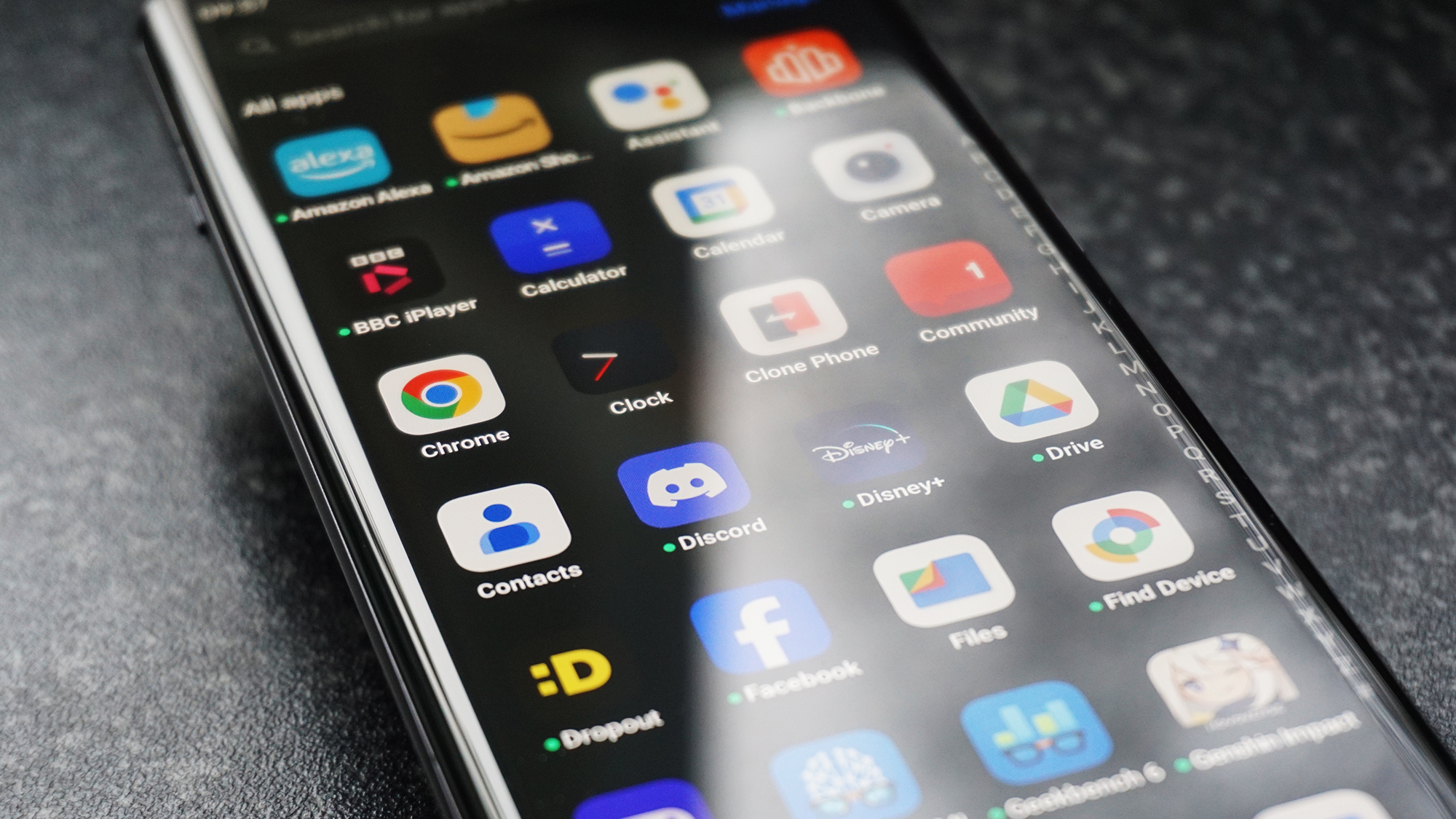
- OxygenOS 14 atop Android 14 out of the box
- Customizable user experience without feeling overwhelming
- 3 years of OS + 4 years of security updates
If you're a long-time OnePlus user, you'll know OxygenOS has lost a little of its individuality since OnePlus and Oppo more closely collaborated on their respective mobile user experiences (we lost the 1+ calculator easter egg with OxygenOS 13), however, OxygenOS 14 (running atop the latest Android 14) still delivers on the core values of OnePlus' software from previous generations; packed with sparks of software design so good that you'd wish other brands would crib from it.
While delivering a relatively clean aesthetic and user experience, OxygenOS has supported user generated wallpapers long before Samsung and Asus called upon AI smarts to offer similar results with their latest-generation phones, Zen Space is a one-stop destination for mindfulness that supports Android's native Digital Wellbeing toolset, gestures and floating windows add a heap of flexibility to the base OS's multitasking experience, and being able to quick-launch apps from the fingerprint sensor is a nice trick too.
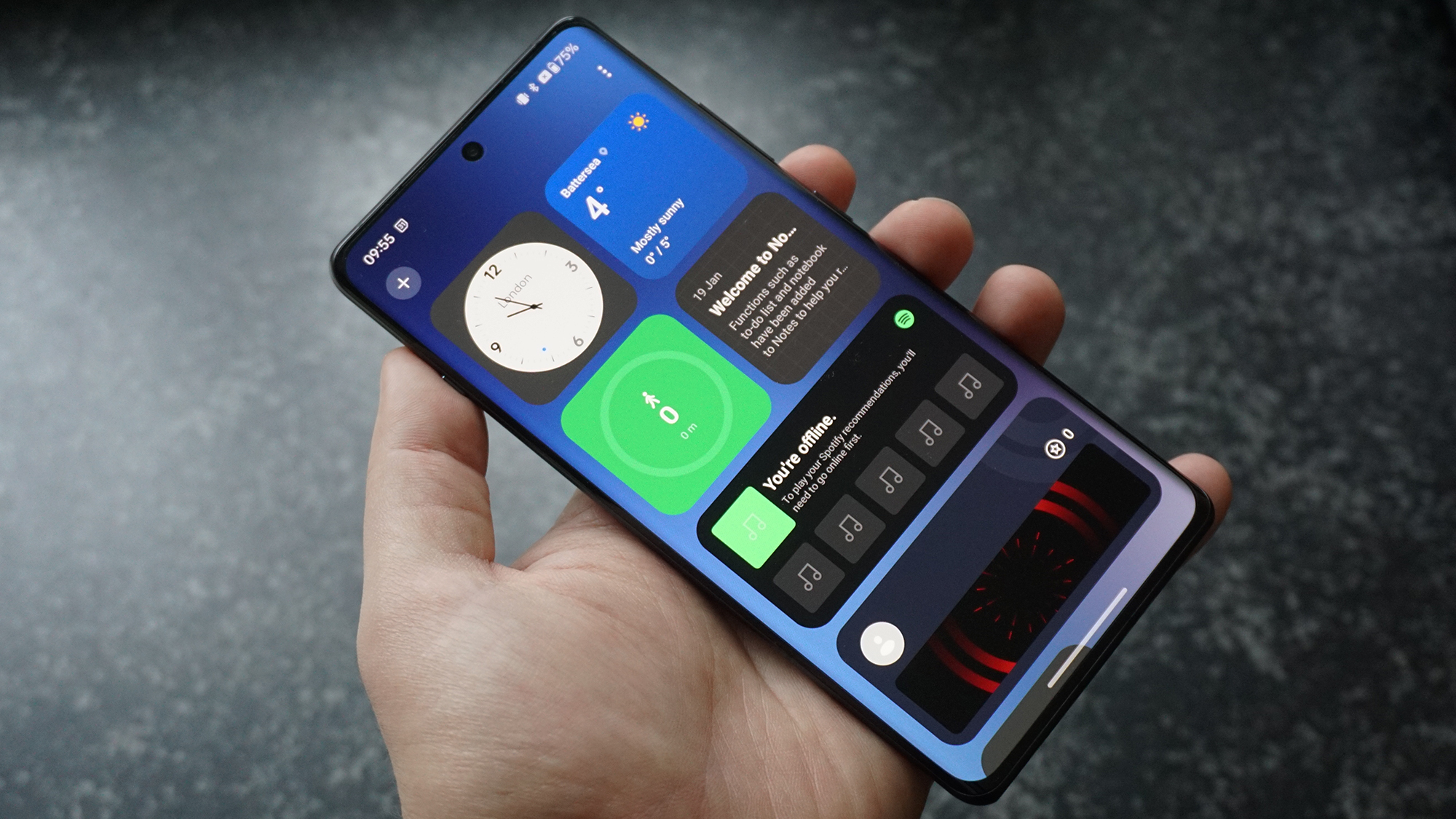
The Shelf is an interesting inclusion that OnePlus has struggled to find a consistent home for within OxygenOS and I'm not convinced its current location – accessed by swiping down on the home screen, replacing quick access to notifications and quick settings – should be its final destination. Nevertheless, as a dedicated home for widgets – akin to Today View on iPadOS – it's a nice way to keep glanceable information all in one place.
OxygenOS manages to walk the line between simplicity and functionality where other brands' user experiences tend to err on the side of 'more features equals better', even if that's at the expense of intuitive navigation and interaction.
The 12R's standing below that of the company's true current flagship does mean that its software support isn't quite as extensive – at three years of OS upgrades and four years of security updates – but that does at least keep it in step with the similarly-spec'd OnePlus 11, meaning both phones won't fall out of favor until Android 18 (and presumably OxygenOS 18).
- Software score: 4 / 5
OnePlus 12R review: Cameras
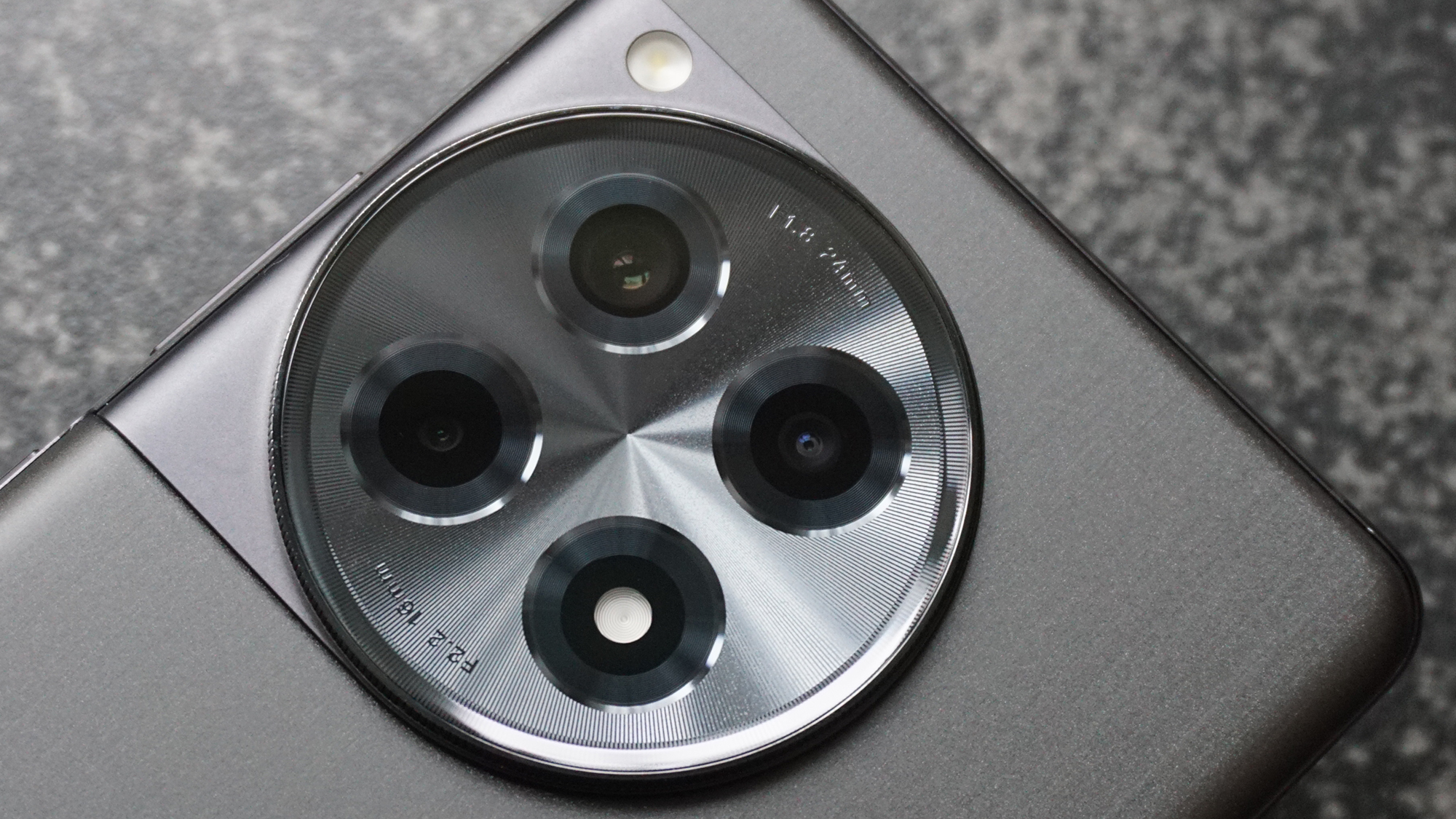
- Robust 50MP Sony IMX890 lead sensor, as on OnePlus 11
- Same RAW HDR algorithm, as on the OnePlus 12
- Ineffectual macro camera
While at a glance the OnePlus 12R's rear camera setup may resemble the OnePlus 11's and 12's, it's likely the biggest departure from both phones and one of the biggest cost-saving aspects of the 12R's spec sheet. You still get the same 1/1.56-inch Sony IMX890 sensor that leads the OnePlus 11's camera setup, complete with a year's worth of software refinement, plus improved speed from mode switching to shutter lag, but beyond its main snapper, the 12R's photographic capabilities are more pedestrian.
The 8MP Sony IMX355 ultra-wide serves up consistent colors with the main camera in good lighting, but detail is noticeably lacking when comparing similar shots taken between the two, while the 2MP macro camera lacks the pixels, dynamic range and color depth to be anything other than novel.
OnePlus 12R camera samples
If you're serious about shooting on the 12R, all your photos should really come from the OIS-supported (optical image stabilization) main 50MP sensor. It offers enough versatility in its own right to satiate the average mobile photographer, and while there's no Hasselblad tuning to speak of – as on the brand's other premium phones – image quality is generally great; with a particular talent for HDR shooting, exemplified by the 'ProXDR' toggle in the phone's native gallery app that shows this trait off most clearly.
Along with excellent colors, detail, and dynamic range when snapping standard 12.6MP jpeg stills, you have the choice of capturing full-sensor 50MP images, as well as HDR shots in RAW, with the 12R benefitting from the same RAW HDR algorithm as found on the OnePlus 12.
One growing trend from the current era of smartphone photography that isn't as prevalent on the OnePlus 12R is AI-supported shooting, especially when it comes to editing tools. Features like generative fill are being popularized by the likes of the latest Google Pixel and Samsung Galaxy smartphones, and is one such AI feature you won't find here.
- Camera score: 3.5 / 5
OnePlus 12R review: Performance
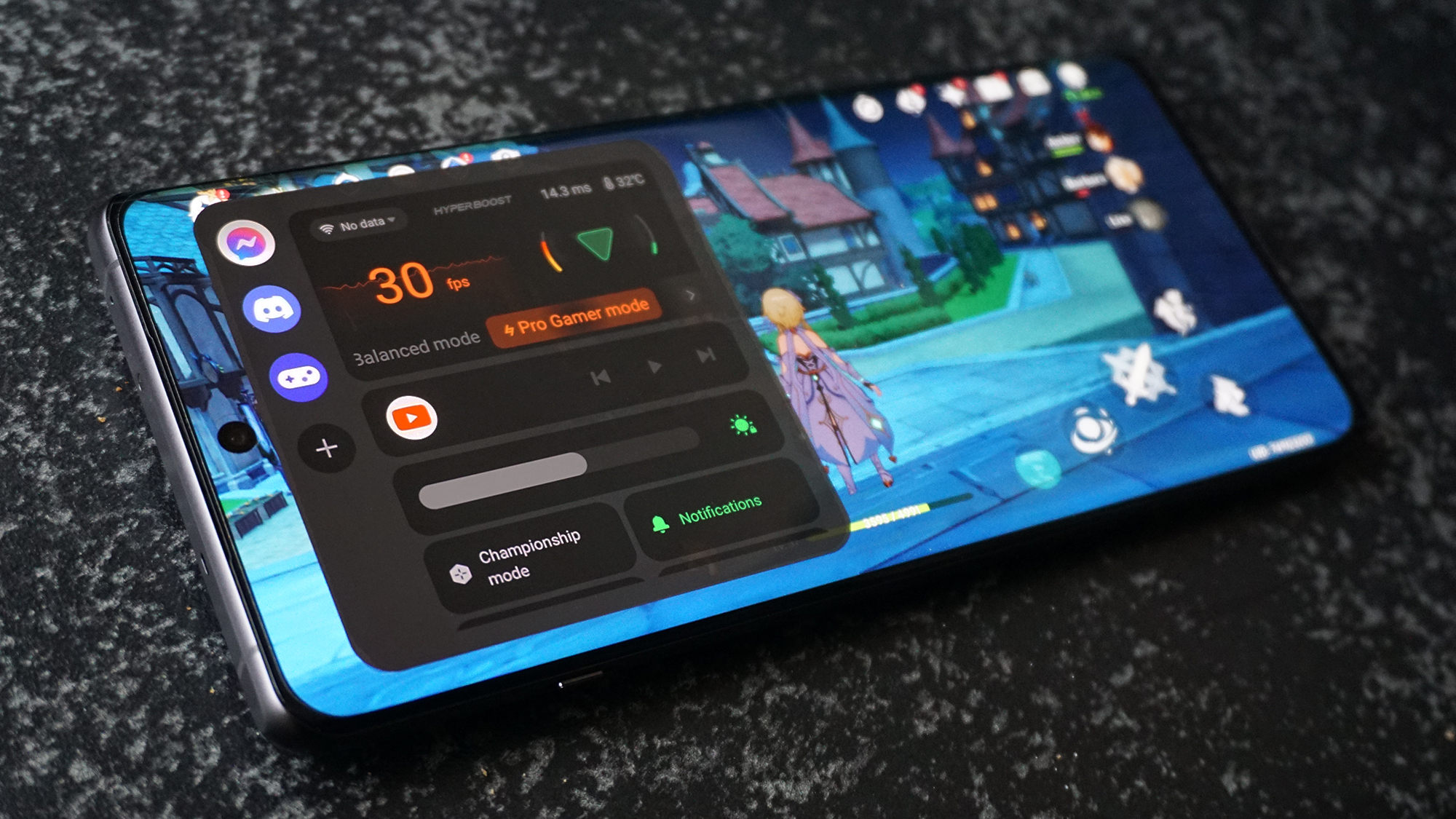
- Qualcomm Snapdragon 8 Gen 2 SoC
- Trinity Engine for CPU, RAM and ROM optimization
- Dual vapor chamber cooling design
If you thought the branding for the various technologies in the display section of this review was a bit much, OnePlus kicks things into overdrive when it comes to talking about the phone's performance. Practically every performance-centric hardware and software optimization comes with a catchy name attached, with the 'Trinity Engine' being the umbrella brand under which they all sit.
Building on memory optimization features the company first introduced with the OnePlus 11, the Trinity Engine consists of three key parts: CPU-Vita, RAM-Vita and ROM-Vita, which collectively work to keep the 12R feeling fast and fluid long into your time with it. This is primarily achieved by throttling for heat management and battery longevity, prioritizing memory allocation for more frequently used apps, and on-the-fly defragmentation of storage to keep files accessible; all in the pursuit of peace of mind for users looking for a worthwhile long-term smartphone purchase.
Running on the same chipset as the OnePlus 11 – paired with the latest UFS 4.0 storage (on the 256GB model, at least) and LPDDR5X RAM for greater speed and power efficiency – you'd expect comparable flagship performance, and in artificial benchmarking tests, you'd be right. In fact, the OnePlus 12R feels as fast and as fluid to use as any current flagship, including more cutting-edge Snapdragon 8 Gen 3-powered phones. The performance shortfall likely won't be felt for at least a year or two, which is to say this phone is comfortable with whatever you throw at it, right now.
Gaming on Genshin Impact with default (medium) graphical settings and a bump up to a 60fps frame rate cap proved zero issue for the 12R for extended periods and seldom were frames dropped. The caveat to that is that despite a new 'Cryo-Velocity' dual vapor chamber cooling system – offering a reported three-times-larger vapor chamber area compared to the OnePlus 11 – heat build-up was more noticeable during intensive tasks than expected; never to a concerning degree, but still.
There are some great user-accessible performance tools worth digging into too. Live Lock is perfect for pinning apps that you want the system to leave resources available for – ideal for downloading system updates for Genshin while doing other things. Gaming Tools let you customize graphical settings, manage notifications and performance allowances, and even toggle improved HDR visuals.
There's also the fact that OnePlus (and Oppo and Realme) phones don't run in a high performance state out of the box. While the 12R feels perfectly tightly wound for responsive everyday use, dive into the phone's power menu and you'll find a toggle for 'high performance mode.' It's a little bonus that you'll likely never need, but additional grunt on tap is never to be sniffed at.
- Performance score: 4 / 5
OnePlus 12R review: Battery
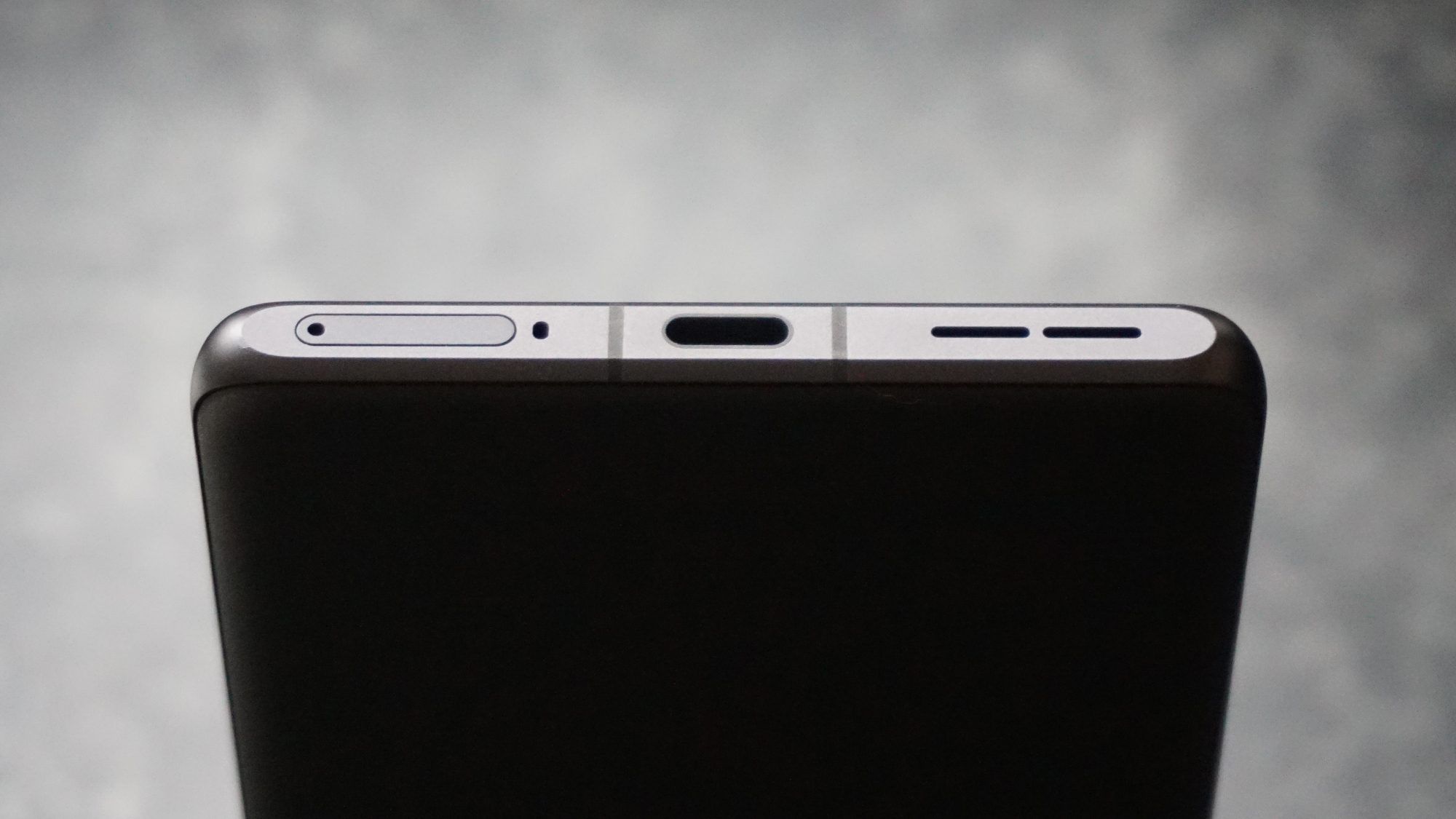
- Largest capacity battery in a OnePlus phone ever
- Up to 100W SuperVOOC wired charging
- Rated for only 20% capacity degradation after 1,600 cycles
Along with the screen, the battery is arguably one of the OnePlus 12R's greatest strengths. Around the same physical size as the OnePlus 11's battery, the company has managed to up the capacity to a whopping 5,500mAh – making this the largest power cell in a OnePlus phone ever.
Even without the latest-generation Qualcomm chipset, that larger capacity helps deliver the best battery life we've tested in a OnePlus phone, clocking in at around eight hours of screen-on time per charge, equivalent to two days of light to average use on a single charge. It's not quite iPhone 15 series longevity, but matches some of the best Android phones on the market, beating out mainstream rivals like the Pixel 8 series, handily.
Not only that, in most markets save for the US (where it peaks at 80W), the OnePlus 12R comes with rapid 100W fast charging, which OnePlus claims means you can hit 100% charge after only 26 minutes, In testing, the review sample used here reached 92% in the same time, fully charging at the 30-minute mark exactly; making this one of the faster-charging phones out there right now.
Being built for long-term use seems to be a key theme of the OnePlus 12R, with the company promising a four-year or 1,600-cycle on the battery, after which they claim longevity will equate to around 80% of the out-of-box performance. For comparison, Apple officially states that its iPhones reach this same 80% capacity threshold after just 500 cycles.
The only real fly in the ointment here is the reduced peak 80W charging speed in the US (a trait found on other OnePlus phones too) and the absence of any form of wireless charging.
- Battery score: 4.5 / 5
Should you buy the OnePlus 12R?
| Attributes | Notes | Rating |
|---|---|---|
| Value | So long as you're happy with the OnePlus 12R's weaknesses, there's a lot of great smartphone for your money here. | 4 / 5 |
| Design | Beautiful fit and finish hides lackluster ingress protection against dust and water. | 3.5 / 5 |
| Display | A superb display, that's stunning, bright, power efficient and smart. As long as you're happy with the size and resolution, there's little wrong here. | 5 / 5 |
| Software | OxygenOS 14 on the 12R is full of features without feeling overwhelming. The phone's long-term update roadmap is behind the curve, though. | 4 / 5 |
| Camera | A superb main 50MP snapper should cover you for most things, but the secondary cameras don't justify their presence on the 12R, especially that macro snapper. | 3.5 / 5 |
| Performance | Last year's flagship silicon still packs plenty of punch, supported by OnePlus' efforts with the Trinity Engine. Thermals could be better, despite the company's claims, though. | 4 / 5 |
| Battery | A big battery that results in the brand's best longevity to date in our tests. No wireless charging is the only misstep here. | 4.5 / 5 |
Buy it if...
Don't buy it if...
OnePlus 12R review: Also consider
Even though it's a great device, there are issues with the OnePlus 12R, so you might want to consider one of the following alternatives.
| OnePlus 11 | Samsung Galaxy S23 FE | Apple iPhone 14 | |
|---|---|---|---|
| Price (at launch): | From $699 / £729 / AU$1,199 | From $599.99 / £599 / AU$899 | From $799 / £849 / AU$1,339 |
| Dimensions: | 163.1 x 74.1 x 8.5mm | 158 x 76.5 x 8.2mm | 147.6 x 71.5 x 7.8mm |
| Weight: | 205g | 209g | 172g |
| OS (at launch): | OxygenOS 13 (atop Android 13) | One UI 6 (atop Android 14) | iOS 16 |
| Display: | 6.7-inch 20:9 2K 1Hz to 120Hz Super Fluid AMOLED | 6.4-inch 19.5:9 Full HD+ 120Hz AMOLED | 6.1-inch (2532 x 1170) 60Hz Super Retina XDR OLED |
| Chipset: | Snapdragon 8 Gen 2 | Snapdragon 8 Gen 1 / Exynos 2200 | Apple A15 Bionic |
| RAM: | 8GB / 12GB / 16GB (LPDDR5X) | 8GB | 6GB |
| Storage: | 128GB (UFS 3.1) / 256GB / 512GB (UFS 4.0) | 128GB / 256GB | 128GB / 256GB / 512GB |
| Rear Cameras: | 50MP main, 48MP ultra-wide, 32MP 2x telephoto | 50MP main, 48MP ultra-wide, 8MP 3x telephoto | 12MP main, 12MP ultra-wide |
| Front camera: | 16MP | 10MP | 12MP |
| Battery: | 5,000mAh w/ 100W wired charging | 4,500mAh w/ 25W wired charging, 15W wireless charging | 3,279mAh w/ 20W wired, 15W wireless (MagSafe), 7.5W wireless (Qi) |
How I tested the OnePlus 12R
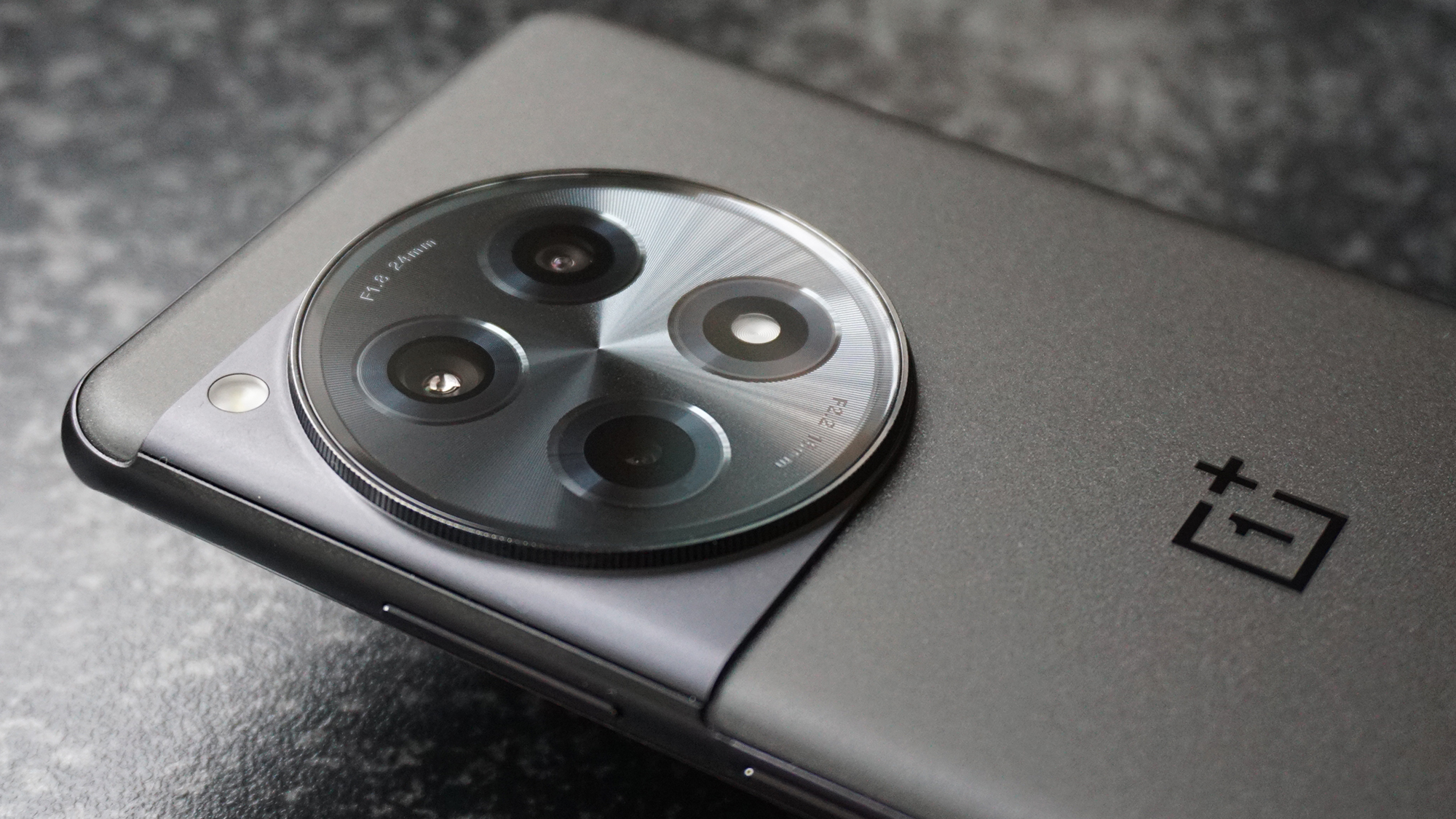
- Review test period: three weeks
- Testing included: everyday use including web browsing, social media, photography, video calling, gaming, streaming video, music playback
- Tools used: Geekbench 6, Geekbench ML, GFXBench, native Android stats, OnePlus 100W SuperVOOC charger
Having received both the OnePlus 12 and 12R a week ahead of the OnePlus 12 series' launch, I got straight to using the 12R (check out our OnePlus 12 review if you're curious about the company's new flagship), adding my own Google account and OnePlus account before using the device as my main phone for the duration of the review period.
Usage included streaming video, snapping stills and video with the phone's various cameras, and toying with the ProXDR display's abilities with both compatible content and gaming.
Publicly available, industry standard benchmarking apps were used to meter the CPU, GPU, and AI performance of the OnePlus 12R, and while we don't always publish the results, we keep them on file for comment and comparison with other devices we've tested. Battery life was tested by recording screen-on time each day across a single charge from 100% to 0%, based on normal everyday use, while the in-box charger was used to recharge the phone, with the charge checked at intervals to assess the rate of replenishment.
The cameras were used in a myriad of conditions to test their versatility, with comparisons between sensors and the cameras of other phones as part of the testing process.
Having extensively reviewed numerous smartphones, including a myriad of OnePlus phones during my 12 years of journalistic experience, I felt confident in putting the OnePlus 12R through its paces and evaluating its abilities in a fair and informed manner, based on the market, its target audience, pricing, and the competition.
First reviewed February 2024
"lasting" - Google News
February 05, 2024 at 09:00PM
https://ift.tt/bylhkQU
OnePlus 12R review: Long-lasting, eye-popping - TechRadar
"lasting" - Google News
https://ift.tt/aBmotOx
Shoes Man Tutorial
Pos News Update
Meme Update
Korean Entertainment News
Japan News Update
Bagikan Berita Ini














0 Response to "OnePlus 12R review: Long-lasting, eye-popping - TechRadar"
Post a Comment